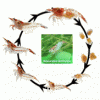Breeding and culling process
-
Similar Content
-
UPDATED: Care guide for Amarinus Lacustris
By Rare Aqua,
- freshwater crab
- freshwater crabs
- (and 4 more)
- 0 replies
- 2203 views
-
UPDATED: Care guide for Amarinus Lacustris
By Rare Aqua,
- freshwater crab
- freshwater crabs
- (and 4 more)
- 0 comments
- 2070 views
-
Curious to know how my blue jelly shrimp have produced a clear orange offspring? Any help would be awesome
By blacksails,
- blue cherry shrimp
- breeding
- (and 3 more)
- 1 reply
- 13265 views
-
- 6 replies
- 1829 views
-
- 4 replies
- 1573 views
-



Recommended Posts
Create an account or sign in to comment
You need to be a member in order to leave a comment
Create an account
Sign up for a new account in our community. It's easy!
Register a new accountSign in
Already have an account? Sign in here.
Sign In Now